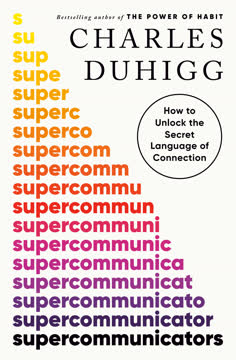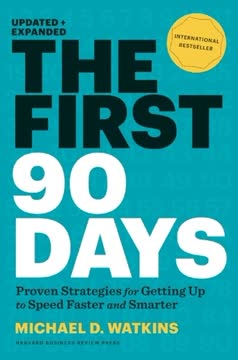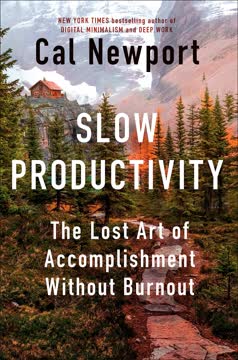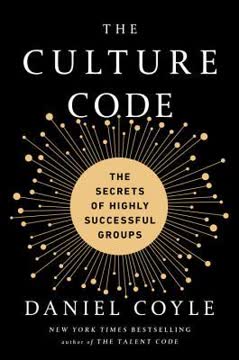Key Takeaways
1. Regenerative businesses cultivate human potential for extraordinary outcomes
Human development builds a company's capacity to generate the thinking that will evolve its operations, industry, society, and world.
Unlocking human potential. Regenerative businesses focus on developing their people, not just their products. They create work environments that foster creativity, innovation, and personal growth. This approach allows companies to tap into the full potential of their workforce, leading to disruptive innovations and extraordinary outcomes.
Systemic impact. By cultivating human potential, regenerative businesses create ripple effects that extend beyond their own operations. They influence:
- Their industry by introducing new standards and practices
- Society by developing more engaged and capable citizens
- The world by addressing complex challenges through innovative solutions
These organizations recognize that investing in people is the key to long-term success and positive impact on a larger scale.
2. Internal locus of control, external considering, and personal agency drive innovation
Internal locus of control arises when people understand that they have full responsibility for their actions, how they experience the world, and the outcomes they produce for themselves and others.
Three core capabilities. Regenerative businesses foster three essential qualities in their employees:
- Internal locus of control: Taking full responsibility for one's actions and outcomes
- External considering: Caring deeply about the effects of one's actions on others
- Personal agency: Taking initiative to create desired changes in the world
Cultivating innovation. By developing these capabilities, organizations create a workforce that is:
- Self-motivated and accountable
- Empathetic and customer-focused
- Proactive in identifying and solving problems
This combination of qualities creates an environment where innovation thrives, as employees feel empowered to take risks, consider diverse perspectives, and actively work towards improving products, services, and processes.
3. Initiative activation, developmental infrastructure, and change acceleration foster creativity
Initiative activation is a structured means for drawing out the inherent human tendency for personal agency, bringing it into the business and its endeavors.
Fostering creativity. Regenerative businesses implement three key elements to nurture creativity:
- Initiative activation: Encouraging employees to take ownership of their work and pursue innovative ideas
- Developmental infrastructure: Providing resources and support for continuous learning and growth
- Change acceleration: Creating an environment that embraces and facilitates rapid transformation
Practical implementation. Organizations can foster these elements through:
- Structured work progression that allows employees to take on increasingly challenging roles
- Regular developmental events that focus on building critical thinking and problem-solving skills
- Self-directed work plans that align personal growth with company objectives
- A culture that celebrates and rewards innovative thinking and risk-taking
By integrating these practices, businesses create an ecosystem where creativity flourishes, leading to continuous innovation and adaptation to changing market conditions.
4. Eliminate toxic practices to pave the way for regenerative work design
Real change arises from the desire and agency of individuals who see an audacious possibility on their horizon and are willing to try almost anything to make it happen.
Identifying toxic practices. Many common business practices hinder innovation and personal growth. Some examples include:
- Hierarchical decision-making structures
- Performance reviews and incentive programs
- Standardized job descriptions
- Feedback systems that undermine self-reflection
Transformative approach. To create a regenerative work environment:
- Critically examine existing practices and their underlying assumptions
- Replace toxic practices with developmental alternatives that foster agency and creativity
- Empower employees to take ownership of their work and personal growth
- Create a culture that values continuous learning and adaptation
By eliminating these barriers, organizations pave the way for a more dynamic, innovative, and fulfilling work environment that aligns with the principles of regenerative business.
5. Evolve into strategic disruption through conscious shock and core team development
The purpose of the first phase of regenerative work design is to destabilize an organization by introducing a provocation that causes people to think from radically new perspectives.
Conscious shock. Introduce a deliberate disruption to challenge existing mindsets and practices. This could involve:
- Asking provocative questions about the company's purpose and identity
- Exposing employees to radically different perspectives or ways of working
- Challenging assumptions about customer needs and market dynamics
Core team development. Form a diverse, cross-functional team to:
- Develop and execute new business strategies
- Learn and apply innovative approaches to strategic thinking
- Share insights and new ways of working throughout the organization
This approach creates a ripple effect of change, awakening creative intelligence across the workforce and shifting the organization from a static to a dynamic mindset. The core team becomes the catalyst for transforming the entire business, fostering a culture of continuous innovation and adaptation.
6. Create a courageous culture that embraces uncertainty and purposefulness
Culture eats strategy for lunch.
Key cultural characteristics. A regenerative business culture embodies:
- Imperturbability in the face of uncertainty
- Purposefulness beyond reproach
- Developmental means
- Regenerative thinking
- Unifying strategy
- Self-to-self relationships
Fostering cultural change. To cultivate these characteristics:
- Encourage experimentation and risk-taking
- Align all activities with a clear, meaningful purpose
- Invest in continuous personal and professional development
- Use systemic frameworks to promote holistic thinking
- Develop a shared vision that unites all employees
- Foster authentic, non-hierarchical relationships
By intentionally shaping these cultural elements, organizations create an environment where employees are inspired to innovate, take ownership of their work, and contribute to the company's larger purpose. This culture becomes a powerful driver of sustained growth and adaptation in a rapidly changing business landscape.
7. Transform business processes to foster wakefulness and innovation
Process refers to how people think, act, and interact. Processes occur in real time, within the changing circumstances of the real world.
Process transformation. Shift from rigid procedures to dynamic processes that:
- Adapt to changing circumstances
- Encourage creative problem-solving
- Foster continuous improvement
Key process areas to transform:
- Hiring: Focus on essence-to-essence connections and shared aspirations
- Working: Emphasize collaborative, self-directed teams
- Disciplining: Develop self-discipline through collegial relationships
- Managing outputs: Take responsibility for downstream effects
- Continuing education: Integrate learning into daily work
- Celebrating accomplishment: Focus on systemic evolution and storytelling
By reimagining these processes, organizations create an environment where employees are constantly engaged, learning, and innovating. This approach allows businesses to remain agile and responsive to market changes while fostering a culture of continuous improvement and personal growth.
8. Design systems that develop people while improving business performance
Systems are means for managing and improving the effectiveness of the value-adding process in serving its purpose by matching patterns in a dynamic world, not ways to control behavior.
Developmental systems. Create integrated systems that simultaneously:
- Improve product offerings
- Enhance production methods
- Develop employee capabilities
Five critical system categories:
- Managing: Increase value in reciprocal exchange with the external world
- Site: Optimize dynamic flows of materials, equipment, and people
- Operating: Improve performance across various aspects of the organization
- Personnel: Grow people to evolve the organization's potential
- Planning: Ensure production aligns with strategy, budget, and goals
By designing systems with these principles in mind, organizations create an environment where business improvement and personal development are inextricably linked. This approach leads to a more adaptable, innovative, and high-performing organization that can effectively respond to changing market conditions.
9. Implement flexible structures that support ongoing evolution and growth
Work design also uses structures to direct traffic, but in this case traffic is the ingenuity and decision making required to get work done.
Three types of regenerative structures:
- Developmental thinking structures: Frameworks that shape and direct mental processes
- Generative structures: Organizational designs that disrupt familiar ways of working
- Manifestation structures: Systems that direct the flow of decisions, outcomes, and accountability
Implementing flexible structures:
- Replace rigid hierarchies with self-organizing teams
- Substitute job descriptions with self-defined roles
- Create cross-functional teams to address specific challenges or opportunities
- Implement frameworks that encourage systemic thinking and innovation
By adopting these flexible structures, organizations can maintain stability while fostering continuous evolution and growth. This approach allows businesses to remain agile and responsive to changing market conditions while empowering employees to take ownership of their work and contribute to the company's overall success.
Last updated:
FAQ
What's "The Regenerative Business" by Carol Sanford about?
- Core Focus: "The Regenerative Business" is about redesigning work to cultivate human potential and achieve extraordinary outcomes. It emphasizes creating a business environment that fosters innovation and personal growth.
- Regenerative Approach: The book introduces a regenerative approach to business, which focuses on developing people and systems that are adaptable, innovative, and aligned with natural patterns.
- Systemic Change: It advocates for systemic change in business practices, moving away from traditional hierarchical structures to more dynamic, self-managing teams.
- Human Development: The book highlights the importance of developing human potential as a means to drive business success and societal improvement.
Why should I read "The Regenerative Business"?
- Innovative Insights: The book offers innovative insights into how businesses can transform their work environments to be more sustainable and human-centered.
- Practical Frameworks: It provides practical frameworks and methodologies for implementing regenerative practices in business, making it a valuable resource for leaders and managers.
- Broader Impact: Reading this book can help you understand how businesses can contribute to societal and ecological well-being, not just economic success.
- Personal Growth: It emphasizes personal growth and development, encouraging readers to think critically about their roles within organizations and society.
What are the key takeaways of "The Regenerative Business"?
- Regenerative Mindset: Adopting a regenerative mindset is crucial for fostering innovation and adaptability in business.
- Human Potential: Developing human potential is central to achieving extraordinary business outcomes and societal impact.
- Systemic Approach: A systemic approach to work design can lead to more resilient and sustainable business practices.
- Cultural Transformation: Transforming organizational culture is essential for implementing regenerative practices and achieving long-term success.
What is the regenerative approach in "The Regenerative Business"?
- Holistic View: The regenerative approach views businesses as living systems that should align with natural patterns and human development.
- Focus on Potential: It emphasizes unlocking human potential and creativity as a means to drive business success and innovation.
- Systemic Change: The approach advocates for systemic change in business practices, moving away from traditional hierarchical structures.
- Sustainability and Impact: It aims to create businesses that are not only economically successful but also contribute positively to society and the environment.
How does "The Regenerative Business" suggest cultivating human potential?
- Developmental Infrastructure: The book suggests creating a developmental infrastructure that supports continuous learning and personal growth.
- Self-Management: Encouraging self-management and personal agency is key to unlocking human potential within organizations.
- Purpose-Driven Work: Aligning work with a larger purpose can motivate individuals and foster a sense of fulfillment and contribution.
- Regular Developmental Events: Implementing regular developmental events helps individuals and teams grow their capabilities and thinking processes.
What are the phases of work design in "The Regenerative Business"?
- Phase One - Strategic Disruption: Introduce a conscious shock to challenge existing mindsets and encourage strategic thinking.
- Phase Two - Cultural Evolution: Focus on evolving the organizational culture to support regenerative practices and innovation.
- Phase Three - Process Evolution: Transform business processes to be more dynamic and responsive to change.
- Phase Four - Systems Evolution: Redesign business systems to align with the new strategic direction and support continuous improvement.
- Phase Five - Structural Evolution: Evolve work structures to foster flexibility, growth, and alignment with regenerative principles.
What role does the core team play in "The Regenerative Business"?
- Strategic Development: The core team is responsible for developing and executing new business strategies that align with regenerative principles.
- Cross-Functional Representation: It includes members from various levels and functions to reflect the whole organization and ensure diverse perspectives.
- Continuous Learning: The core team engages in continuous learning to develop systemic and strategic thinking capabilities.
- Cultural Influence: It plays a key role in influencing and transforming the organizational culture to support regenerative practices.
How does "The Regenerative Business" address innovation?
- Initiative Activation: The book emphasizes activating individual initiative to foster a culture of innovation across the organization.
- Developmental Infrastructure: Creating a developmental infrastructure supports the growth of innovative thinking and practices.
- Change Accelerator: It introduces the concept of a change accelerator to ensure that innovation leads to meaningful and beneficial change.
- Systemic Integration: Innovation is integrated into all aspects of the business, not isolated in specific departments or teams.
What are some best quotes from "The Regenerative Business" and what do they mean?
- "The work of growing great companies turns out to be, as well, the work of growing ourselves." This quote highlights the interconnectedness of personal growth and business success.
- "Regeneration goes beyond resilience or sustainability." It emphasizes that regeneration is about evolving and improving systems, not just maintaining them.
- "You never change things by fighting the existing reality. To change something, build a new model that makes the existing model obsolete." This quote, attributed to Buckminster Fuller, underscores the importance of creating new paradigms rather than trying to fix old ones.
- "The essence of the independent mind lies not in what it thinks, but in how it thinks." It suggests that developing critical and systemic thinking is more important than the specific content of one's thoughts.
How does "The Regenerative Business" propose dealing with complexity?
- Systemic Frameworks: The book advocates using systemic frameworks to manage complexity and make informed decisions.
- Collective Intelligence: It emphasizes the importance of harnessing collective intelligence and diverse perspectives to address complex challenges.
- Continuous Learning: Encouraging continuous learning and adaptation helps organizations stay responsive to changing conditions.
- Focus on Potential: By focusing on potential rather than problems, businesses can navigate complexity more effectively and creatively.
What is the significance of external considering in "The Regenerative Business"?
- Caring for Others: External considering involves caring deeply about the impact of one's actions on others and the larger system.
- Holistic Perspective: It encourages a holistic perspective that takes into account the interconnectedness of all stakeholders.
- Strategic Alignment: By considering the needs and aspirations of customers and stakeholders, businesses can align their strategies for greater impact.
- Cultural Shift: External considering represents a cultural shift from self-centeredness to a more inclusive and empathetic approach to business.
How does "The Regenerative Business" redefine leadership?
- Developmental Leadership: Leadership is redefined as a developmental role focused on growing the potential of individuals and teams.
- Systemic Thinking: Leaders are encouraged to adopt systemic thinking to understand and influence complex systems.
- Empowerment: Empowering others to take initiative and make decisions is a key aspect of regenerative leadership.
- Purpose-Driven: Leaders are guided by a larger purpose that aligns with the well-being of the organization and its stakeholders.
Review Summary
The Regenerative Business receives mostly positive reviews, with an average rating of 4.10 out of 5. Readers appreciate Sanford's unique language and wisdom, finding the book challenging yet insightful. Many view it as a valuable resource for redesigning company culture and fostering innovation. Some readers struggle with the writing style and abstract concepts, while others praise its practical advice. The book is seen as particularly useful for entrepreneurs, leaders, and those interested in personal growth, though a few find it difficult to extract concrete ideas.
Similar Books










Download PDF
Download EPUB
.epub digital book format is ideal for reading ebooks on phones, tablets, and e-readers.




